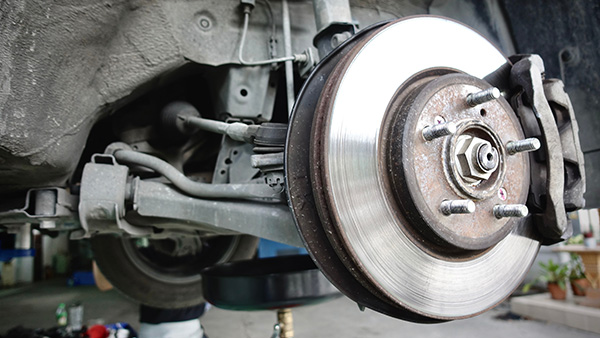
Your vehicle’s braking system is one of its most critical safety features, and at the heart of that system are your brake pads and rotors. These two components work together to help your car come to a smooth, safe stop every time you press the brake pedal. But like all parts that experience constant friction, they don’t last forever. So, how often should you replace your brake pads and rotors, and how can you tell when it's time?
While there's no universal mileage for every vehicle or driver, there are some clear signs to watch for and general maintenance guidelines that can help you avoid risky driving conditions and expensive repairs down the road.
What Is the Role of Brake Pads and Rotors
Brake pads are designed to press against the brake rotors (also known as brake discs) to slow down or stop your wheels. When you press the brake pedal, hydraulic pressure forces the brake caliper to clamp the pads onto the spinning rotor, creating the friction needed to reduce speed. Over time, this friction wears away the surface of the pads and gradually thins the rotors as well.
Rotors are built to handle heat and pressure, but repeated stress can cause them to warp, crack, or lose thickness, especially if the pads are left on too long. That’s why keeping both components in good condition is essential for braking performance and vehicle safety.
Typical Replacement Intervals
Most brake pads last between 25,000 and 65,000 miles, depending on driving style, vehicle type, and the quality of the pads themselves. Some may last even longer if most of your driving is done on highways rather than stop-and-go city roads. Hard braking, towing heavy loads, or driving in mountainous terrain can wear them out much faster.
Rotors usually last longer than pads and may only need replacement every 50,000 to 70,000 miles. However, they should always be inspected when you get new pads. If they’re too thin, uneven, or damaged, they’ll need to be replaced or resurfaced to ensure even contact with the new pads.
How to Know It’s Time for New Brake Pads
One of the most obvious indicators that it’s time for new brake pads is a squealing or screeching noise when braking. Most modern pads come with built-in wear indicators that make this noise when they’re worn down.
You might also notice:
- A grinding sound, which usually means the pad is worn down completely and the metal backing is contacting the rotor
- Increased stopping distance or a soft brake pedal feel
- A vibration or pulsation in the pedal, which can indicate uneven pad wear or rotor damage
- A brake warning light on your dashboard (if your vehicle is equipped with sensors)
If you notice any of these symptoms, it’s best to schedule a brake inspection right away. Waiting too long can result in more extensive rotor damage and increase the cost of repairs.
What About Rotor Replacement
Rotors can often be resurfaced if they’re slightly warped or uneven. But if they’re below the minimum thickness specified by your manufacturer, resurfacing isn’t an option. Driving with warped or worn rotors can cause the pads to wear unevenly, reducing braking performance.
Signs your rotors may need replacement include:
- A pulsing brake pedal when stopping
- Visible grooves or scoring on the rotor surface
- A blue tint or heat marks, which suggest overheating
- Cracks on the rotor
Some newer vehicles come with coated rotors that resist corrosion better and may last longer, but no rotor is immune to wear.
Why It's Important Not to Delay Brake Service
Neglecting brake maintenance doesn’t just lead to higher repair bills. It can seriously compromise your ability to stop quickly, especially in emergencies. Worn brake pads can increase stopping distances and damage the rotors, while damaged rotors can lead to brake fade or failure under heavy braking.
Additionally, poorly maintained brakes can cause uneven tire wear, stress on suspension components, and a less comfortable driving experience overall. Routine brake inspections, ideally every 10,000 to 15,000 miles or with every oil change, will help you catch problems before they become dangerous.
Driving Habits That Extend Brake Life
The way you drive has a major impact on how often your pads and rotors need replacement. Here are some habits that can help extend their lifespan:
- Avoid hard, sudden stops when possible
- Maintain a safe following distance to reduce the need for constant braking
- Downshift on long descents rather than riding the brakes
- Don’t overload your vehicle unnecessarily
- Get routine inspections to catch small problems before they escalate
Choosing high-quality brake components also matters. Cheaper pads may wear out faster or generate more noise, while premium pads offer better stopping power and often last longer.
Expert Brake Service Available at Alvin’s Auto Center in San Jose and Milpitas, CA
Whether you’re due for a brake inspection, need new pads, or want to have your rotors evaluated, Alvin’s Auto Center is here to help. Our team of certified technicians can quickly diagnose any braking issues and recommend the right solution for your vehicle and driving style.
Visit us in San Jose or Milpitas today to keep your brake system in top condition and ensure your safety every time you hit the road.